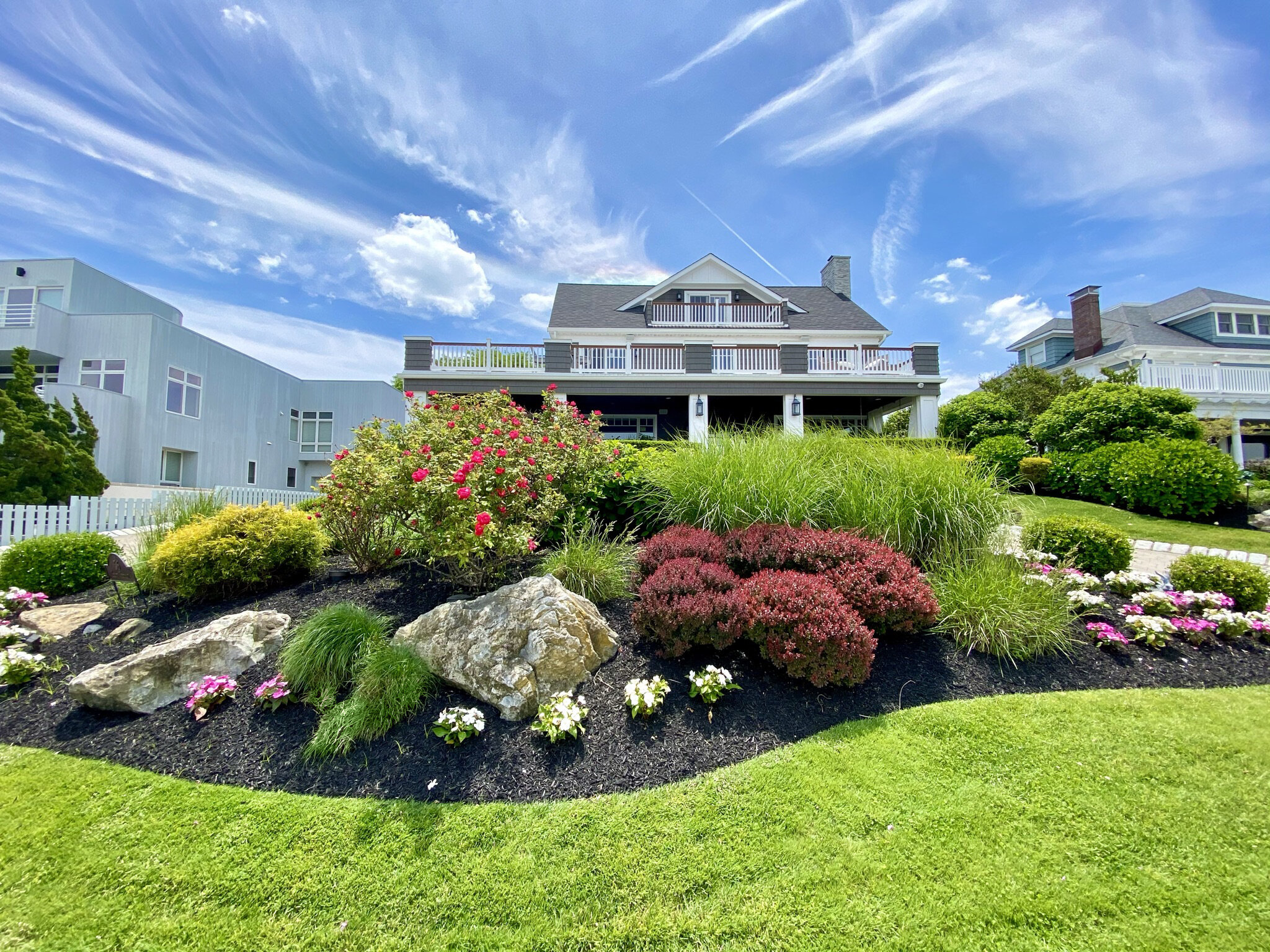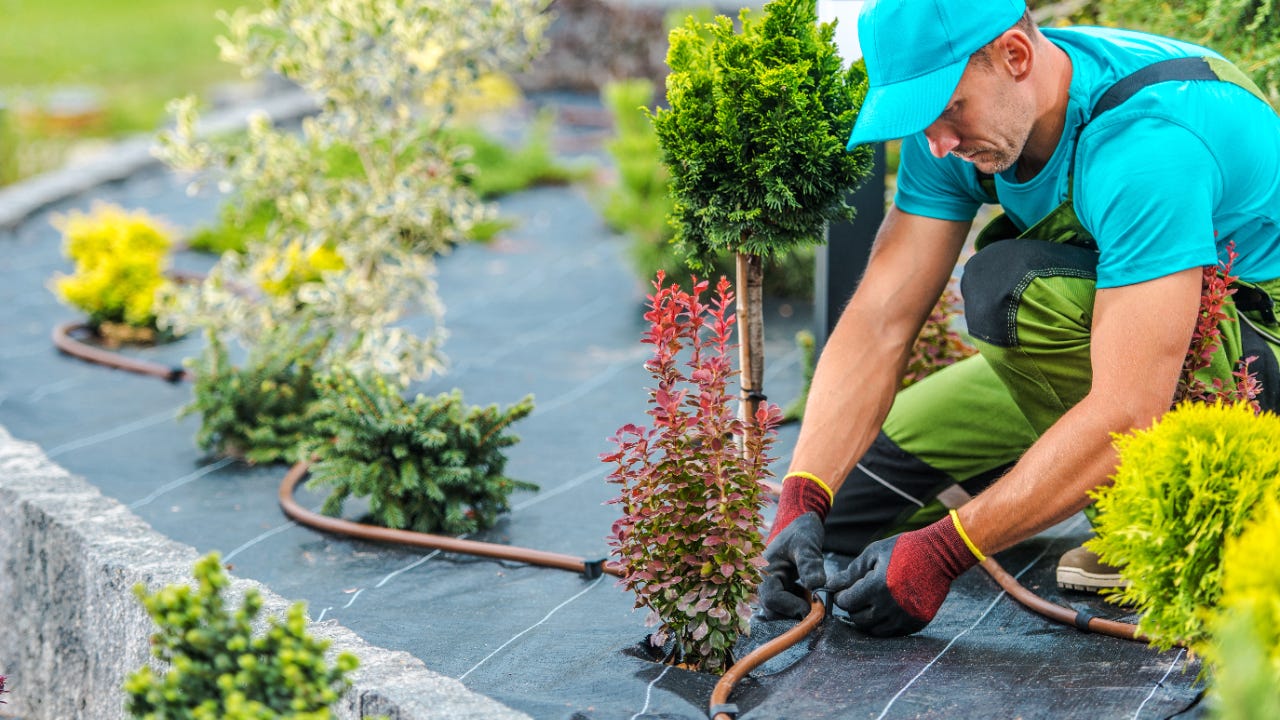Discover the Conveniences of Lasting Palm Desert Landscaping Techniques
Discover the Conveniences of Lasting Palm Desert Landscaping Techniques
Blog Article
A Comprehensive Guide to Creating and Implementing Effective Landscape Design Solutions
The art and scientific research of landscaping expand beyond plain looks; they include a thoughtful integration of layout principles, environmental stewardship, and sensible application. What strategies can one utilize to make certain these landscapes not just prosper yet likewise flourish in harmony with their environments?

Understanding Landscape Design Concepts
One might question what fundamental aspects add to efficient landscape design. At its core, successful landscape design rests on a number of crucial concepts that guide the setup and selection of components within a space. These concepts consist of unity, equilibrium, rhythm, and percentage, each offering to create an unified outside atmosphere.
Unity refers to the cohesive partnership among numerous parts, making sure that they work with each other visually and functionally. Balance can be attained via asymmetrical or in proportion arrangements, permitting the landscape to feel secure and welcoming. Percentage includes recognizing the scale of components in regard to each various other and the surrounding environment, advertising visual harmony and convenience.

Analyzing Your Outdoor Space
Prior to executing the concepts of landscape design, a complete assessment of your outside space is crucial. This initial assessment aids define the extent of your landscape design task and guarantees that your layout aligns with the one-of-a-kind qualities of your residential property. Begin by evaluating the dimensions of your room, taking precise dimensions to understand the readily available location for numerous elements such as outdoor patios, gardens, and paths.
Next, observe the existing features of your landscape, including topography, soil quality, and water drainage patterns. These variables considerably influence plant selection and positioning. In addition, assess the sunlight exposure across different locations throughout the day, as this will certainly influence the kinds of plants that thrive in your garden.
Take into consideration the microclimates developed by frameworks, trees, and other barriers, as they can impact temperature and wetness degrees. Take note of any kind of existing plants or hardscape aspects that you want to eliminate or maintain. This extensive assessment lays the groundwork for a well-informed and effective landscape design service, guaranteeing that your design is not just visually pleasing but lasting and also functional for several years to come.
Lasting Landscape Design Techniques
Including lasting landscaping techniques is important for creating an eco liable exterior room. These methods not only advertise environmental balance yet also enhance the practical and visual worth of a landscape. One foundational strategy is the usage of indigenous plants, which need much less water and maintenance while supporting neighborhood wildlife. Implementing reliable watering systems, such as drip irrigation, minimizes water waste and makes certain that plants get sufficient dampness.

An additional effective method is the critical placement of bushes and trees to provide natural windbreaks and color, thus reducing power expenses (Palm Desert Landscaping). Rainfall gardens can be incorporated right into the landscape design to handle stormwater drainage efficiently, filtering system contaminants prior to they enter waterways
Picking the Right Plants
Choosing the right plants for your landscape is essential to accomplishing both aesthetic appeal and ecological consistency. The procedure begins with an understanding of your neighborhood climate, dirt problems, and the specific microenvironments within your landscape. Examining elements such as sunshine direct exposure, moisture degrees, and existing flora will certainly help you select plants that grow in your special setting.
Take into consideration incorporating indigenous plants, as they are well-adapted to local conditions, require less maintenance, and assistance local wildlife. Additionally, selecting a varied array of species can boost biodiversity while reducing the threat of condition and parasite episodes. It is crucial to review the development routines, flowering periods, and seasonal shades of possible plants to produce a cohesive and vibrant landscape.
Furthermore, assume concerning the meant use of the space; for example, if the location will experience high foot traffic, go with resilient ground covers. By thoughtfully choosing plants that align with both your visual goals and ecological demands, you can produce a sustainable landscape that not about his only enhances your property yet my explanation additionally adds favorably to the surrounding ecosystem.

Execution and Upkeep Techniques
As soon as the ideal plants have been chosen for your landscape, the focus changes to effective execution and ongoing upkeep strategies. Successful installment starts with appropriate website preparation, which consists of soil testing to identify nutrient degrees and pH, followed by changing the dirt as needed. Carefully organize plants according to their development routines and light requirements, making sure ample spacing to advertise healthy and balanced growth.
Irrigation is a critical aspect of application. Develop a watering schedule that takes into consideration the certain requirements of each plant varieties, changing for seasonal changes. Using drip irrigation systems can boost water efficiency and lower overflow.
Upkeep methods have to be implemented to ensure the longevity and vigor of your landscape. Normal jobs consist of weeding, mulching, and trimming to regulate development and protect against illness. Fertilizing must be performed based upon soil tests, supplying the required nutrients without over-fertilizing.
Keeping an eye on for illness and insects is necessary; early discovery can protect against substantial damages. Finally, seasonal modifications to maintenance routines, such as winterizing perennials and preparing for springtime development, will guarantee that your landscape remains healthy and straight from the source balanced and aesthetically attractive year-round.
Final Thought
Effective application and recurring maintenance additionally make certain the longevity and vigor of landscapes. By integrating these elements, landscapes can be changed right into beautiful, functional environments that advertise biodiversity and add favorably to area well-being.
One might wonder what fundamental elements add to efficient landscape design. At its core, effective landscape style pivots on numerous vital concepts that lead the setup and option of components within a room.Picking the right plants for your landscape is important to accomplishing both visual charm and eco-friendly consistency. It is crucial to review the development routines, flowering periods, and seasonal colors of potential plants to create a cohesive and dynamic landscape.
As soon as the ideal plants have actually been selected for your landscape, the focus shifts to effective implementation and recurring upkeep approaches.
Report this page